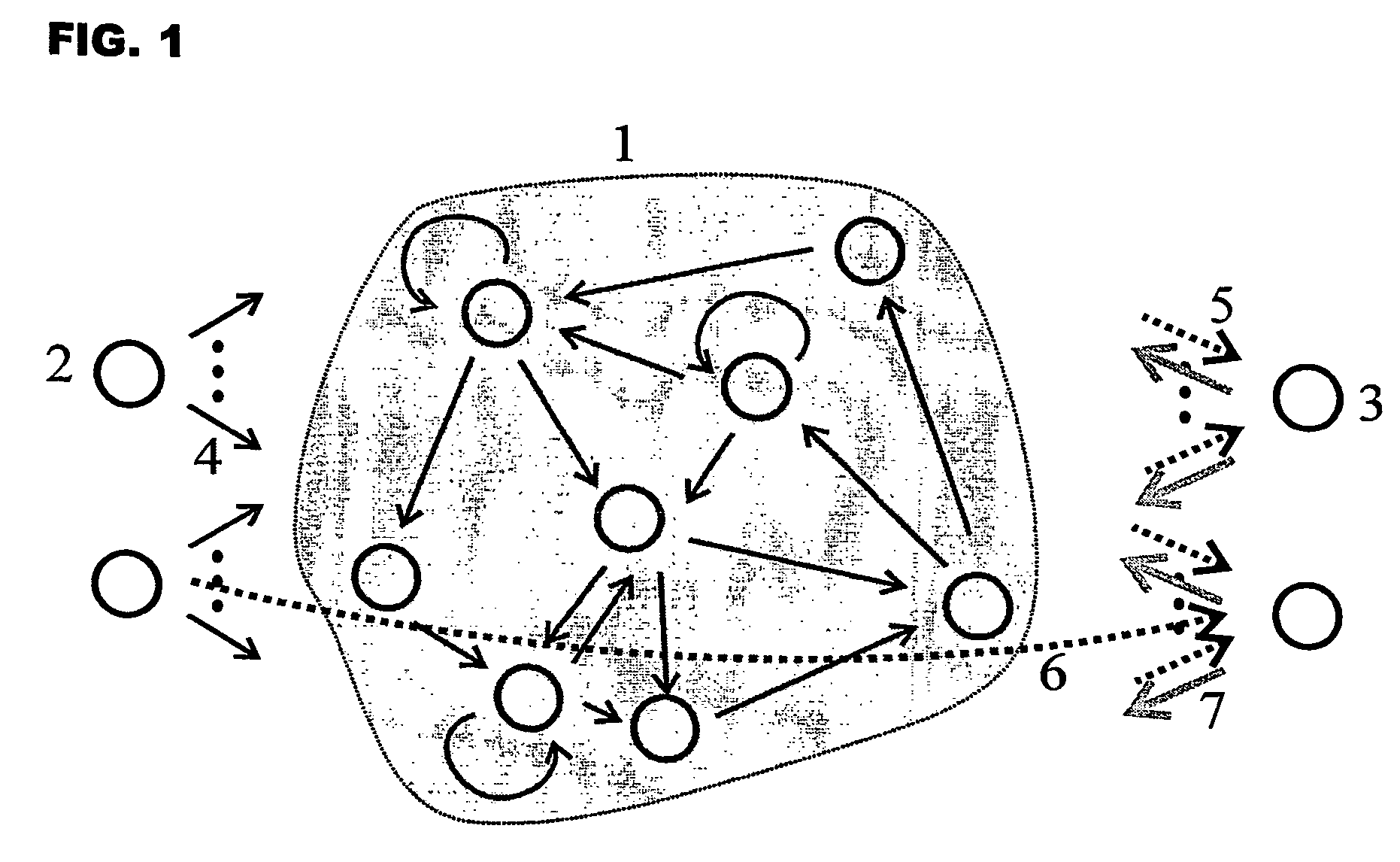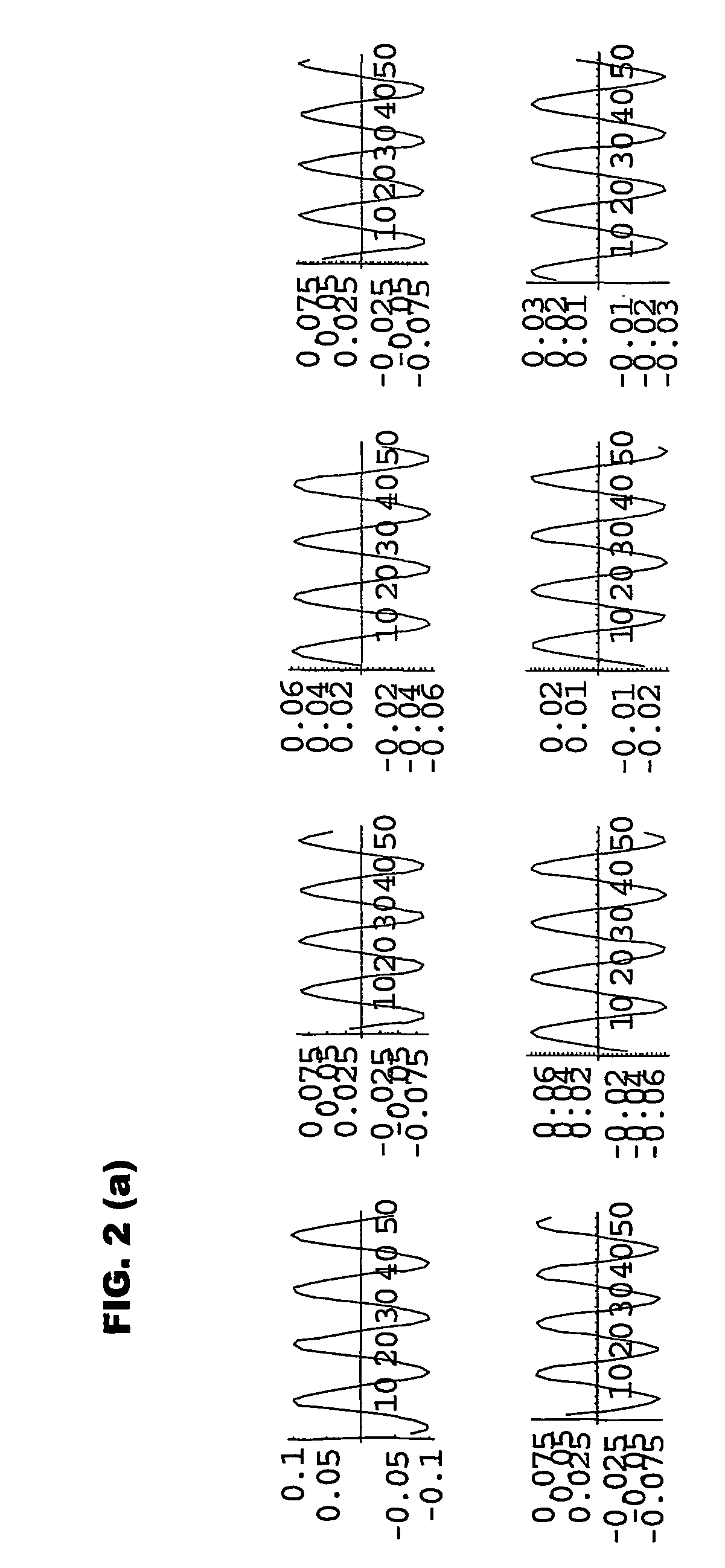Method for supervised teaching of a recurrent artificial neural network
- Summary
- Abstract
- Description
- Claims
- Application Information
AI Technical Summary
Benefits of technology
Problems solved by technology
Method used
Image
Examples
Embodiment Construction
[0115]Preferred embodiments of the invention are now described in detail. Like in the Summary of the Invention, the detailed description is organized by presenting first the architectural and setup aspects, and then the procedural aspects of the learning method.
Setup of the DR
[0116]A central architectural aspect of the invention is the provision of the DR whose weights are fixed and are not changed by subsequent learning. The purpose of the DR for the learning method of this invention is to provide a rich, stable, preferably long-lasting excitable dynamics. The invention provides the following methods to realize this goal.
Rich Dynamics through Large Network Size
[0117]Preferred embodiments of the invention have relatively large DRs to provide for a rich variety of different unit dynamics. 50 units and (many) more would be typical cases, less than 50 units would be suitable only for undemanding applications like learning simple oscillators.
Rich Dynamics through Inhomogeneous Network S...
PUM
 Login to View More
Login to View More Abstract
Description
Claims
Application Information
 Login to View More
Login to View More - R&D
- Intellectual Property
- Life Sciences
- Materials
- Tech Scout
- Unparalleled Data Quality
- Higher Quality Content
- 60% Fewer Hallucinations
Browse by: Latest US Patents, China's latest patents, Technical Efficacy Thesaurus, Application Domain, Technology Topic, Popular Technical Reports.
© 2025 PatSnap. All rights reserved.Legal|Privacy policy|Modern Slavery Act Transparency Statement|Sitemap|About US| Contact US: help@patsnap.com



